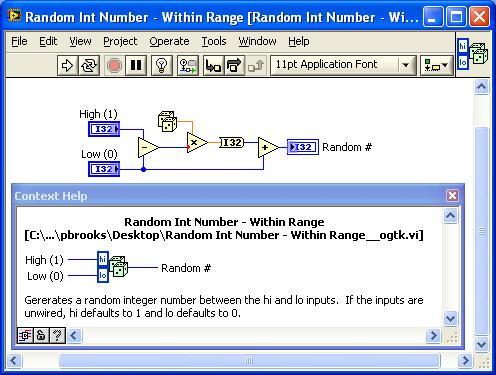Search the Community
Showing results for tags 'closed review'.
-
This OpenG Review is closed. See Summary Post here. Please start a new thread to discuss new changes to this VI. Read this post for start of review. I’d like to suggest these three VIs (or similar) as possible LVOOP-object additions to the OpenG Toolkit: “Get Class Name” is a modification of “Get Name of Class of Object” posted by AQ. Here it just returns the basic class name (which I use often in custom probes and the like). "Get Default Object” is inspired by this discussion and uses AQ’s zero-iteration loop method. This is a very simple VI, but using it instead of the raw code is much clearer to the reader. “Same or child class” just uses “Preserve Runtime Class” as a tester. Again, the advantage here is code readability (or it will be, as soon as someone comes up with a good icon for it). Thoughts? — James OpenG Suggestions.zip
-
This OpenG Review is closed. See Summary Post here. Please start a new thread to discuss new changes to this VI. VI Name: Supress error Total VIs: 2 Description: This VI has a integer (array), error code, as input and when the error code matches the error code on the error wire it supresses the error. Note: - Blockdiagram: Scalar: Array: Code: Supress Error.zip What are you thoughts on this VI? Would you like to see such a function in OpenG? Can you optimize the code? In which package should it be included? Should it be rejected?
-
closed review Random Number - Integer (Numeric Package)
Phillip Brooks posted a topic in OpenG Developers
This OpenG Review is closed. Based on Jim's suggestion in my post Select Random Array Indices, I submit this VI: 'Random Int Number - Within range'. The existing OpenG Random Number VI would presumably be renamed and added to a polymorphic VI. I chose I32 data types for compatibility with array indexing functions. The default values of one and zero allow this to be used with 'Not Equal to Zero?' to simulate a coin toss. Discuss. Random Int Number - Within Range__ogtk.vi UPDATE: I was going to provide a link to the existing OpenG 'Random Number' documentation. A Google search found that Jim already submitted something similar to the old OpenG forums, see here. Jim mentions that the high and low are negatively biased and solves this by adding one to the high value and then rounding down. I think his is better. Rather than duplicate Jim's post and test code, is there a way we can import the discussion from the OpenG board to the LAVA board? -
This OpenG Review is closed. See Summary Post here. Please start a new thread to discuss new changes to this VI. Please PM me if there are any issues with this thread. Community, This VI was in the Candidates folder for the String Package. It has been sitting in there for a while therefore, I have just gone ahead and posted as is (so the license will be migrated on confirmation from the author etc...). What are you thoughts on this VI? Would you like to see such a function in OpenG? Can you optimize the code? It may be better suited in e.g. Comparison Package? Should it be rejected? Kind regards Jonathon Green OpenG Developer Is an MD5.vi TEST - Is an MD5.vi Code is in LabVIEW 2009
-
This OpenG Review is now closed. See Summary Post here. Please start a new thread to discuss new changes to this VI. Community, This is the integration of ShaunR's Fast Trim to OpenG's Trim Whitespace function. Please review the code and submit all comments below. On testing PC the new Trim Whitespace VI is >3x faster than the native version and ~5x faster than current OpenG version. Aside from the algorithm change the VI is now a subroutine (like natvie version). The new interface supports an additional argument Remove non-printable characters (False), see BD for further comments. Kind regards Jonathon Green OpenG Developer Trim Whitespace (String) 1.vi TEST - Trim Whitespace (Performance).vi TEST - Trim Whitespace 1.vi
-
This OpenG Review is now closed. See Summary Post here. Please start a new thread to discuss new changes to this VI. Please PM me if there are any issues with this thread. VI Name: String to char array Total VIs: 1 Description: This VI creates a array of characters of a string. It splits a string every character. Note: Maybe there should be added another input with which you can tell that the string needs to be splitted every 2/3/4... chars instead of every char. This can easily be done by using the counter in the for loop together with modular arithmetic and a case structure. Blockdiagram: Code: String to Char Array.zip What are you thoughts on this VI? Would you like to see such a function in OpenG? Can you optimize the code? In which package should it be included? Should it be rejected?







